Toolkit: Triglav
Published March, 2024
by Gabor Nemerov

In talks with (Működésben in Hungarian) is a new series started out on MMN Magazine, that features interviews with notable figures of the local Hungarian and international electronic music scene. The focus of the interviews is on artistic practices and creative methods, but of course, each interview touches upon other topics too, may that be a more specific or a general one, including past events or future plans. Deeper and rather technical discourses may appear in the series, but altogether it strives to be clear and accessible, thus presenting an overall profile of the artist, including a number of photographs taken at the artist’s studio.
The first episode of In talks with features Triglav, aka. Márton Bertók.
–
How did you get in contact with making music, what is your first music-related memory?
My first memory that is connected to music is sitting in my parents’ car as a kid, while we were listening to music. But music was not really a part of my life for a long time: I only got into it in high school. The first band that had a really big influence on me was Radiohead, which eventually opened up a lot of doors. My parents noticed this and handed me a bunch of Coil and Swans albums, and I’ve also started going to concerts that András suggested (András Nun, the co-founder and organizer of UH Fest). Probably the most influential of those was the 2010 edition of UH Fest.
Making music came from the impressions I had during these events. I couldn’t listen to something without trying to understand, what the hell was happening. It has always intrigued me: someone coming up on stage with weird devices, pressing buttons; but how does that make sounds? I’ve done a bit of research and I realized, how much hardware instruments cost, and I became a bit disappointed [laughs].
What were your first instruments?
I’ve tried learning the guitar in school, and I’ve also had some piano lessons – which I would not call an outstanding success – then of course I moved on to Ableton Live on my laptop. Modular synthesizers were really tempting ever since I was into Radiohead. Jonny Greenwod used it a lot.. I was also captivated by Derek Holzer’s set at the 2010 UH Fest, where he was playing on his big DIY modular system. I remember asking several people about how that thing was actually working, but no one was able to answer me. Then, after I spent some time figuring stuff out on my computer, I visited Zoli Balla, and tried his Korg MS-20 synth, which made me think that maybe all this hype around using hardware actually makes sense, and it is not just an insane money sink. I spent my first paycheck on a Eurorack module, which was an oscillator, the Verbos-version of the Buchla dual-oscillator, and that’s where it all started.
Actually, let me correct myself: before that, I’ve had an Octatrack for a while, which was a wonderful instrument.
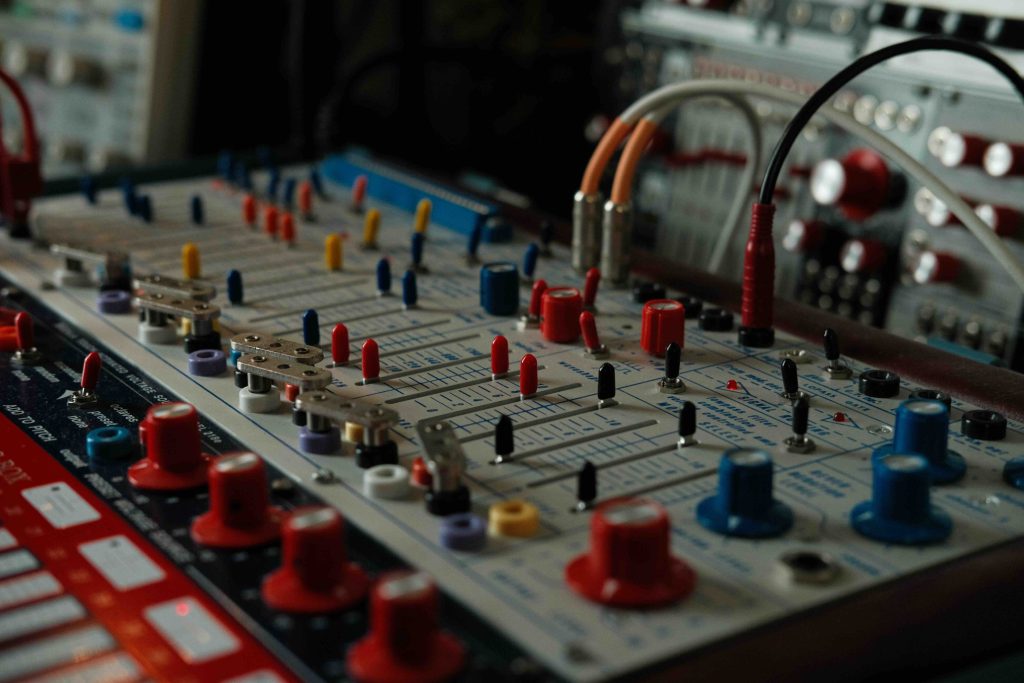
You mentioned Ableton and Octatrack as your initial instruments, which all include a very much digital aspect. Following these, you slowly drifted towards the more analog, Eurorack sphere, and then to the Buchla-ecosystem. What made you take this series of steps?
I didn’t consciously choose to work with either analog or digital sounds when I was playing around with the Octatrack and Ableton. These were just interesting tools which could be used to make interesting sounds. The turning point for me was listening to Charles Cohen’s ‘Brother I Prove You Wrong’. It was kind of a revelation. It had this organic, rich sound, which was nothing like any other synthesizer-based music that I’ve heard before. I found out that it was a Buchla, then once again, I saw the price tag and became a bit sad. [laughs].
This is how I got into Eurorack, which is a format that was pretty much copying Buchla and Serge. I started to build a system, that was more or less equivalent to a [Buchla] Music Easel, in order to make a ‘cheaper’ version, that of course still wasn’t cheap at all, nor was it a Music Easel, but it was still a very capable and interesting instrument.
If I’m correct, this setup satisfied your needs for a while; yet after some time you indeed moved towards a real Music Easel. How come?
I was never completely satisfied with most of these modules, I always had the impression that they ‘do not work well’, or rather: they do not work in the way I want them to work. There were also modules that one could only build in a DIY fashion, for example one of my lo-pass gate clones or the Turing Machine. In the beginning I got a lot of help from Peti Márton and Bálint Zalkai, then I started to build and modify these modules myself. After I’ve gathered some experience in all of this, I figured: while I could still not afford an official Buchla (especially not a vintage one, I would need to sell my apartment for that), I now had enough DIY skills that I could probably build myself a Music Easel – so I did.
The Buchla-sound, even to this day, takes a rather odd, unusual approach to sound than, let’s say, subtractive synthesis. What do you think, why is the Buchla so unique and special, in comparison to a more traditional instrument, let’s say an MS-20?
The MS-20 is really good, I’m not gonna say anything negative about it. Yet, those instruments are generally made with the mindset – even if you don’t have to use them that way – that you start by setting up a timbre, and then you proceed to play that timbre on a keyboard (or a sequencer or whatever). Sometimes you wiggle the filter knobs but that’s pretty much it. The Buchla and Serge philosophy is a bit more open, and timbre-modulations [along with the note-based use of the instrument] are equally, if not more important.
Do you know other people in Hungary, who also work with Buchla-systems?
One of the guys at Analogue Zone has a Buchla if I recall correctly; and Bálint Zalkai is also building one, I’m not sure if he’s done with it yet. Plus, there is this guy, Gábor Kakuk, who is behind the Encoder Audio plugins. He’s got a Music Easel, along with some Serge and various DIY stuff, but I don’t know him personally, only from Buchla Facebook groups and modular synth forums.


How do you go about making music, creating new work?
I’m following the path of least resistance [laughs]. I don’t like composing things, so everything I do starts from improvisational sessions. I prefer to have a setup where I can start generating sound right away, so I have this button here [presses a button on the side of his desk], which powers everything u and I can immediately start playing [the Music Easel starts to sing], and then I start making long loops … [he becomes quiet, he is focusing on his instrument, playing it for approx. 30 seconds, then he looks at me again].
I build layers upon layers for about 20-40 minutes. I send them to the mixer as separate tracks, which I leave there to rest for at least 6 months [laughs], or until a point when I feel that I have enough. If I have enough tracks, I cull them and import them into Ableton. I tend to edit and layer them further with tape music methods. Even though I like to work with live material, I don’t consider them to be untouchable. I cut and reorganize the live recordings, and I create the finished pieces from those.
What do you mean exactly by tape music methods?
I mean that, for example, I’m not re-sampling: I only do things that could be done with an analog tape too: cutting, slowing down, speeding up, layering, reversing, EQing, filtering…
So practices that could have been done even, lets say, 70 years ago.
I’d say so. So there isn’t a lot of post-processing work. Let’s say, if I have a 40-minute long improvisation – in this case I’m trying to find the sections that are important, and cut out the bits I find boring.
Now, when you demonstrated how you’d start working on a new piece of music, you reached for your Music Easel instantly. Can we say that this is your main instrument these days?
Absolutely, the Music Easel and the Electro-Harmonix 45000 looper. These are at the center of everything. Sometimes I go back to my Eurorack to record something if I already have the main structure of a track and still feel like something is missing , but this does not happen that often nowadays.
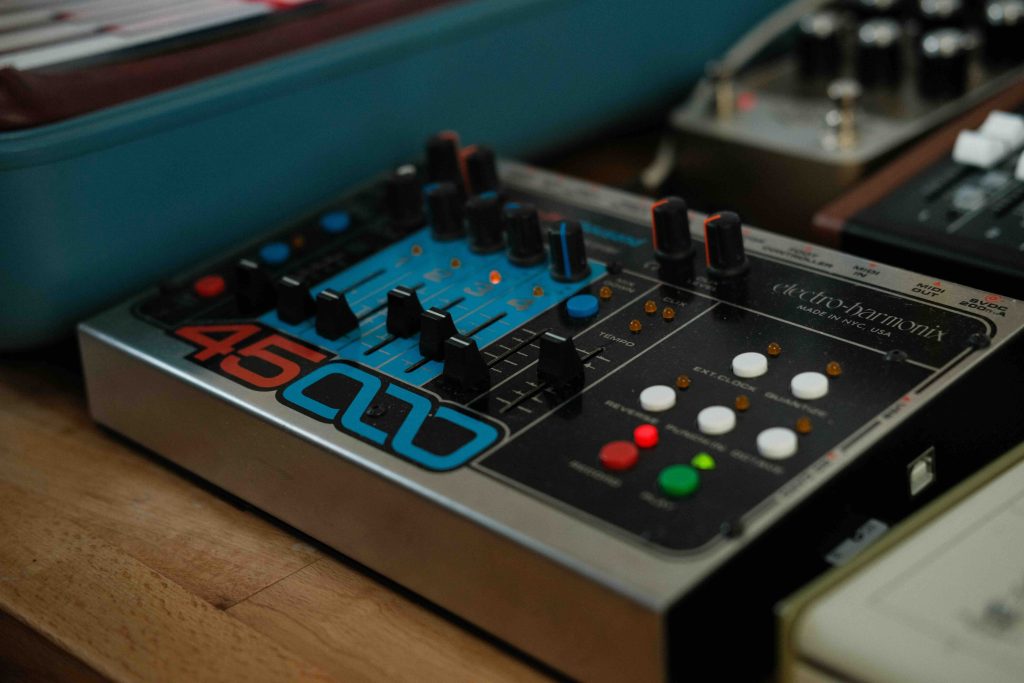
I see you have a Roland TR-09 drum machine on your desk, which is of course the contemporary version of the classic 909 drum machine. This was not here when I visited you last time.
This is a rather new addition to my setup – I got it because I really hated all drum machines [laughs], and I wanted to see whether I can make something with it that… I don’t hate that much. It is such a complex and convoluted piece of gear, compared to what I’m used to, I’m still a novice at it. And I’m not a fan of pre-programming drum patterns and beats.
So the exact thing that other people are using this gear for…
Yeah, so at the moment I am struggling to integrate it neatly, but I have managed to make some pretty interesting things with it already. Using it in a ‘techno’ context does not interest me at all; but for example what Mark Bell did with it in Björk’s ‘Hunter’ is very inspiring.
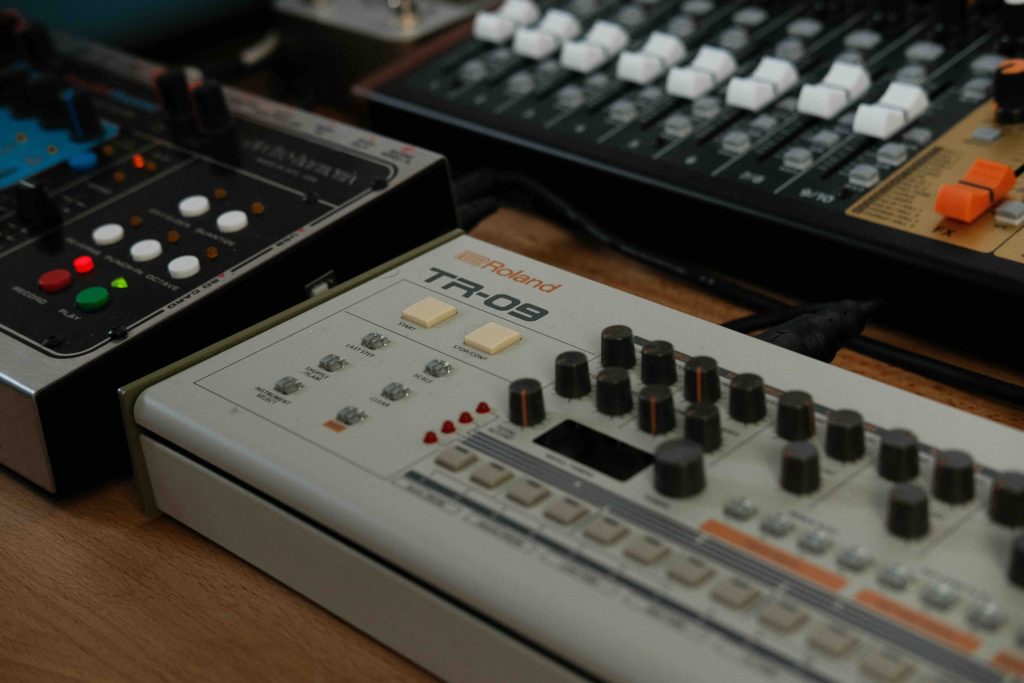
Do you already have some ideas on how to integrate it in your music?
That’s still in flux, but I’d like to make some subtle rattlings with it which are not put in the forefront, but rather provide a sort of steady pulsation to the already cyclical themes.
There is a sequencer in both the Roland and the Buchla; are you planning to sync the two?
Yes, but at the moment this is not working as expected, because I haven’t found a MIDI splitter that would work with my MIDI-to-analog clock converter. The problem is, that even though the 09 has a MIDI THRU, if I’m controlling it with my looper and the 09 transmits the MIDI signal to the Buchla, the MIDI signal gets all messed up because the 09 adds a bunch of surplus information that makes the converter go crazy. So, I’d need a good enough MIDI splitter, but this is all I know at the moment.
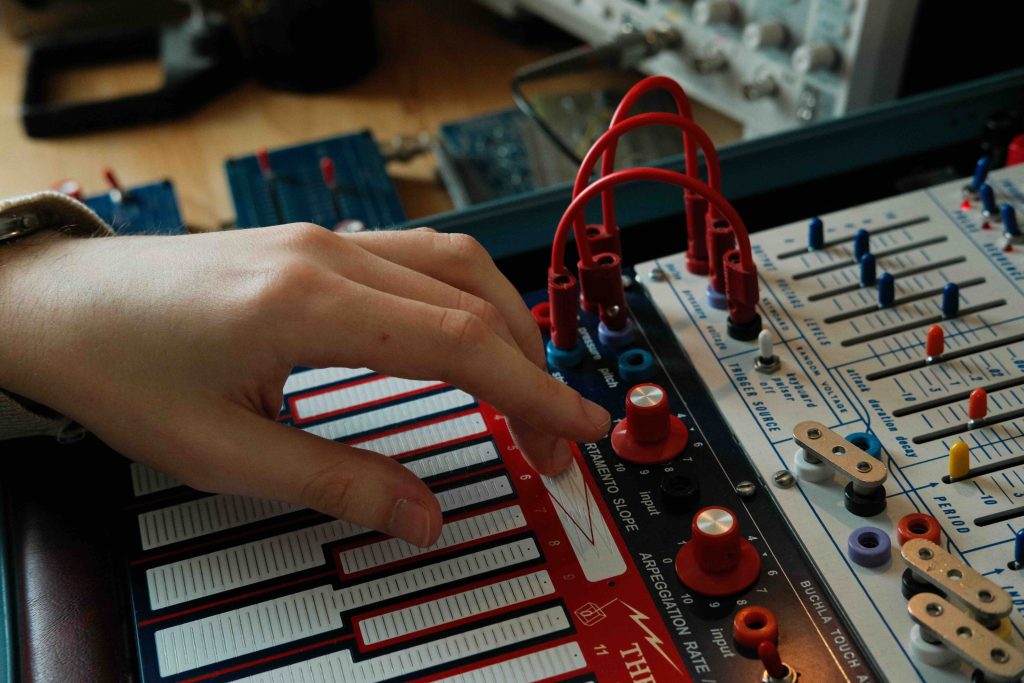
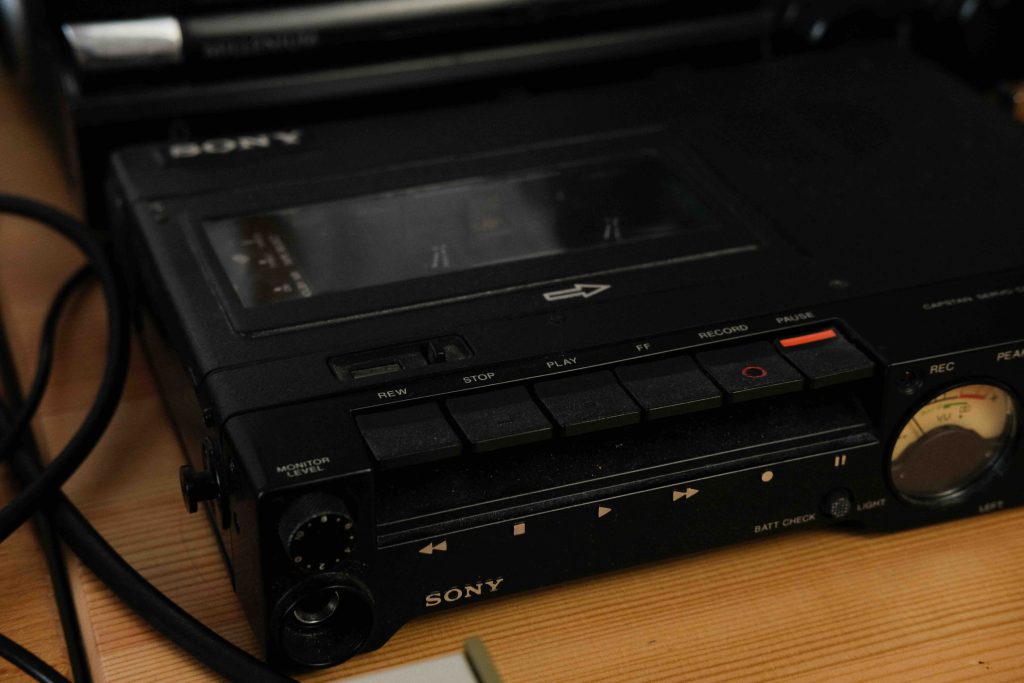
What was the collaboration like with Éva (Éva Bárdits, aka. Trutat, ex-Aires Altos, ex-Holnaplányok) for your album, and how did you come up with the idea of working on an album as a duo?
Shall we answer this together? [Márton looks over my shoulder to Éva, who is there in the room with us, they laugh]. I’d feel awkward talking about you, while you cannot react. . [Éva thus joins us.]
Márton: We first met at one of my concerts at Lumen, around two years ago. At that time I really wanted to do a solo show, because I had the feeling that I was playing in free jazzy collaborations all the time, which can be great of course, but it’s not what I wanted to do as a solo performer. Dávid (Dávid Tamás Pap, organizer, founder of PrePost Records) agreed to organize a gig for me, but we would need to get another performer for that night. I wanted to get someone who could provide some contrast for the evening, probably someone who’s more acoustic, but I was in a bit of despair because I could not think of anyone…
Éva: Well that’s really flattering [laughs].
Márton: So I went on Bandcamp, listened to everything that was experimental music from Budapest, and there was one I really liked, and that was the album of Vicus [=Éva].
Which album was that?
Márton: The Trutat one. [‘GIlles in the Red’].
Éva: Yeah, that is the only album available on Bandcamp from that project, back from 2014.
Márton: I’ve done a bit of research to find out who was behind it, contacted her, and she agreed to join that event. And so, in my opinion, we’ve played a pretty good concert at Lumen.
But on that night, if I get it right, you were playing one after another?
Márton: Yes, we were playing two separate sets, but we agreed beforehand not to have a break in-between. Instead, we had about 5 minutes of playing together, as she joined me, and started her set.
Éva: That’s right, and it was an exciting coincidence, because we didn’t even discuss the fact that I wanted to start my set with a folk song, and Marci was also finishing his set with a folk song. These blended into each other really well.
Márton: After this event we agreed to play together again, as we enjoyed it very much, and this is what came out of that.
Éva: By the way, this Paraszttá Leendés album was also my thesis project. This provided a great framework and opportunity to work on the theoretical aspect of the album. Apart from this, I believe the basis of our collaborative work was improvisation, we were jamming a lot together at home.
Márton: That’s true, but also, these tracks weren’t really coming directly from improvisation, but rather, there were songs that were Vicus’ ideas, and then we worked on them. Likewise, there were songs that were my ideas, and then we worked on those too.
So these are preexisting folk songs that are on the album, is that correct?
Márton: Yeah, except the first one, plus more or less the last one. That is a communist adaptation based on the melody of a folk song.
[We are all nodding, I’m checking my notes, exit Éva.]
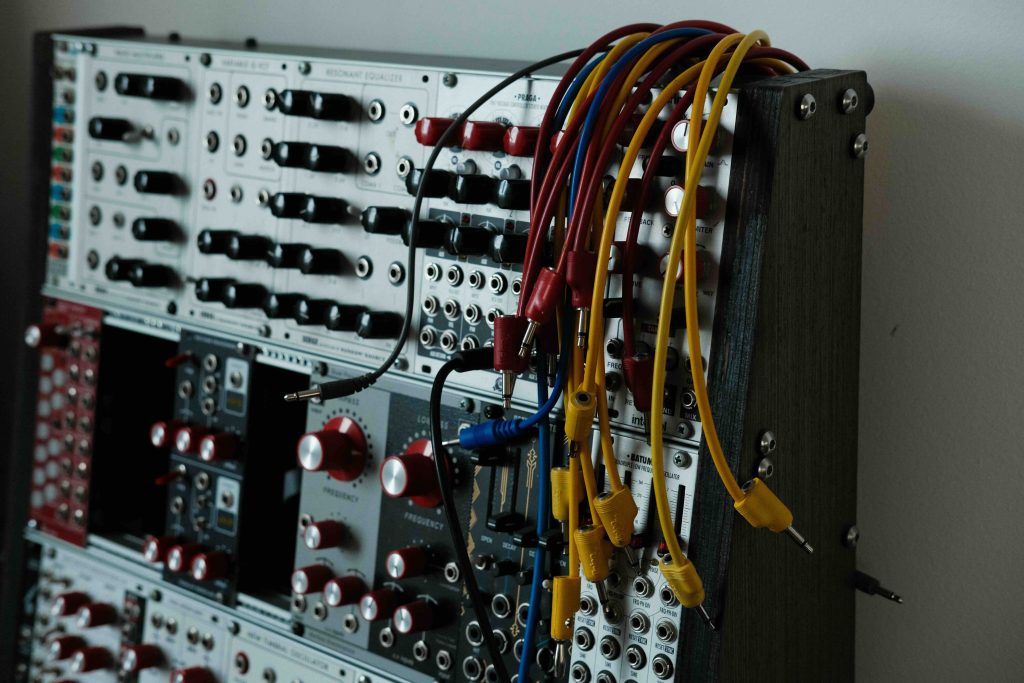

You are an instrument maker too – you manufacture instruments and modules on demand. How come you started working as such?
Let me refer back to the Eurorack-story: I felt there was always something slightly wrong with all the Eurorack modules I used or built. For example, they did not have the kind of response curve I wanted them to have, like, they were linear, while they should’ve been more exponential. Or they distorted way too much, or did not distort enough – my point is, I had to deal with tiny annoyances all the time. So I started doing these small modifications on the modules I already had.
Then at some point I wanted to have a Buchla 257 Voltage Processor module, still in Eurorack format, and though there were already options on the market, I did not quite like any of them for one reason or another. Since this is a pretty simple module, I thought maybe I could make my own copy of that but I came to realize quite quickly that this is not going to be such a straightforward thing to do in Eurorack, because the original Buchla circuit could only handle control voltages (which was not an issue, physically you could not plug anything else there). Yet in Eurorack there are no limits like this, so it would be great if the module could work with audio signals too.
I was thinking a lot about how to upgrade the Buchla circuit to work with audio, but then I decided to start from scratch. What I did is that I kept the interface (more or less), and I designed a completely new circuit, based on the SSI2164 IC. It took a lot of prototypes to make it work, but in the end I succeeded, so eventually I could create this module that performed kind of like the Buchla 257.
Because of the unique circuit and the modified UI, we can call this a custom design. Since it can work in audio-territory too, I added some new features – for example, the voltage controlled crossfader can be switched to be a ring modulator, without any additional patching.
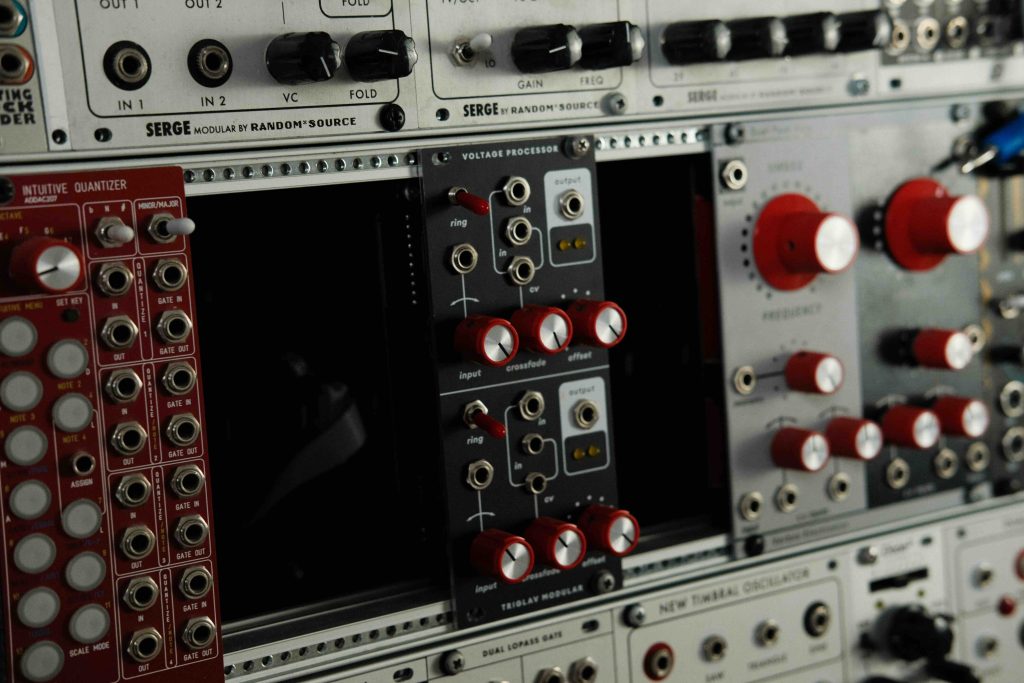
Following this, then you had more and more custom ideas?
Yes, not long after this I started to build the Music Easel, which has this card slot. Smarter people than me have already figured out that in addition to preset storage, it can also be used to expand the features of the Music Easel. For example, you can insert a card, that adds one of the EMS Synthi’s oscillators to your Buchla.
I was wondering, what else could be done in this format, and what I was still missing. My first creation was the radio card, which I actually wanted to do for a long time. There’s a story about John Cage visiting Don Buchla’s studio in the 1960s and being impressed by a voltage controlled radio. It was a keyboard interface which could switch between different radio stations, thus in fact, play the radio as an instrument. I tried to channel this enthusiasm into my custom-designed Radio Receiver Card 208-7, which can receive FM, AM and SW radio transmissions, and scan through them with voltage control.

What makes a good instrument, in your opinion?
I think the most important aspect of an instrument is the interface. It is where the player and the instrument form a connection. The circuits of the Music Easel are, to be honest, not that special – except maybe the oscillator and the ring modulator, but those are interesting from more of an engineering perspective, not from a sonic point of view. What makes the Music Easel the Music Easel – that is, a good instrument – is that it has a much better interface than any other synthesizer I have seen. You can get the sound from the Arturia Music Easel [a software emulation of the Music Easel] and I probably could not tell them apart in a blind test. But the Arturia one is still a completely different instrument, because it’s controlled with your mouse or trackpad…
Or you might map a controller to some of its parameters…
Exactly. Don Buchla’s philosophy was that if you design the interface first, and then figure out how it will work behind the panel, your instrument will never become obsolete. I completely agree with this. A lot of engineers come up with an interesting circuit, they put some knobs on it and there you go, you can twiddle them around. Many synthesizers are made this way, yet you could not really put your finger on what the design is actually good for, in a musical context.
The interface of a Serge system for example is based on a grid system, especially the early Paperface modules. The reason behind that was an engineering one, to be able to use the same panel for all the modules: by swapping a paper overlay you will have the labels at different places, but you will still have everything on a grid. Conversely, the Buchla philosophy was based on the idea that even a blind person should be able to find their way around the instrument. The more important knobs are bigger, and they are not placed in an evenly spaced, strict order. But moving on from the Music Easel, if you take a look at the Buchla 200 Series modules: every module, even if it has only 4 knobs, is designed to have a unique layout. You can easily tell them apart at a glance.
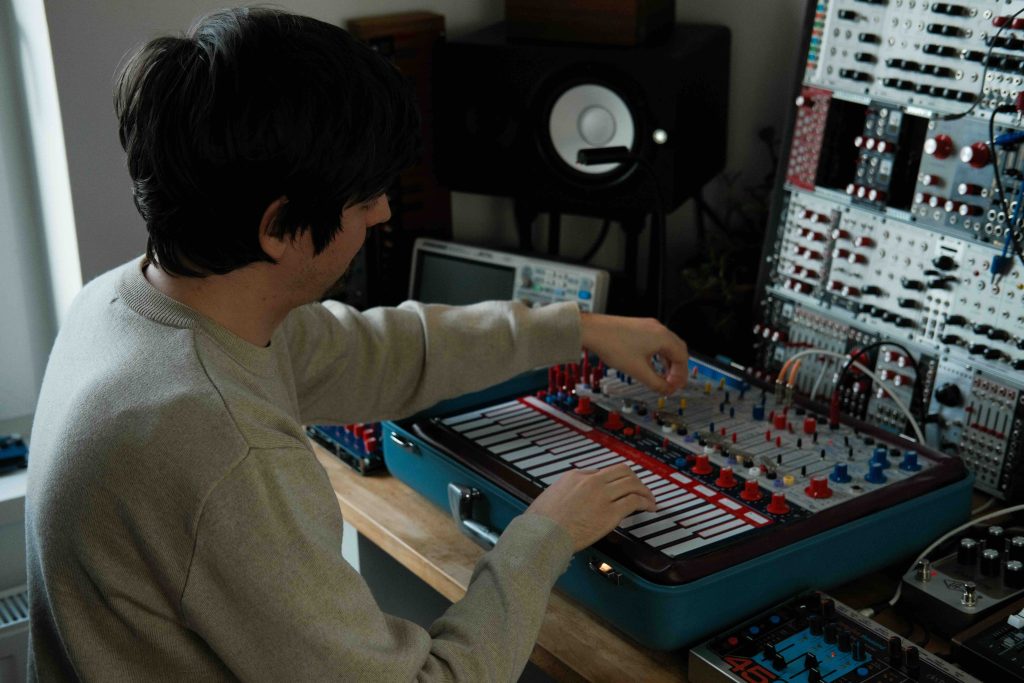
How does a live performance look like for you? Is there a difference between practicing for a show and working on recorded material?
They are very similar. A live performance for me is usually like those 20-40 min. sessions I mentioned earlier. The difference is that for a performance, I create an outline beforehand for the various sections I want to include. These are pretty broad concepts, so it’s not like ‘I’m gonna play in C Major’, or in ‘E Minor’. It’s more like, coming up with patches I will use, or a general mood, and the overall arc of the concert. And I’m improvising within that structure.
So it is similar to working in the studio, but obviously on stage I don’t have the option to edit. At concerts, I am trying to provide the experience of live music to the audience, I want them to be able to feel that what they are hearing is the result of my movements.
During your performance at last year’s UH Fest you did a rather interesting thing: you handed out a ‘concert guide and evaluation sheet’. Additionally, you introduced your concert in a short and self-referential speech, in which you encouraged the audience to pay attention to the music, and evaluate what they heard. How did you come up with this idea?
I’m usually terribly bored by most of the ‘experimental’ live performances you can see nowadays. I’m bored by how formulaic, humorless and professional they are. I don’t find those concerts experimental or playful at all, and I don’t see the artists actually engaging with the fact that they are on a stage. They just go through their sets which I find incredibly boring.
An obvious influence here is Goodiepal, who is all about playing with this situation. His shows are in part an examination of the show and the genre itself.. I was trying to achieve something similar myself at the UH gig.
What I also wanted to reflect on was the feeling of alienation in electronic music.
I think more often than not, the audience is absolutely clueless about what an electronic musician is actually doing on stage. Maybe others do not care about the details as much as I do, but I think there is a certain tension in a live performance which is lost if the audience is not aware of the stakes. If the audience does not know mistakes can be made, because most of the time they indeed can’t be, since many of the electronic music acts make their setup so foolproof, that they eliminate all tension. If you see a professional musician going on stage, you know that there is very little risk involved in what they are about to do – because all of it is pre-programmed.
You reflected on this one too with your sheet – there were options for the audience to decide, how well certain segments were carried out…
Yeah, and I’ve also explained how risky each segment will be, how it is made, plus I’ve tried to introduce the cards [the cards that can be inserted in the Music Easel, expanding its possibilities], so the audience could have a chance at understanding what they were used for during the performance.
I believe that the musician has to take a risk by stepping on stage.
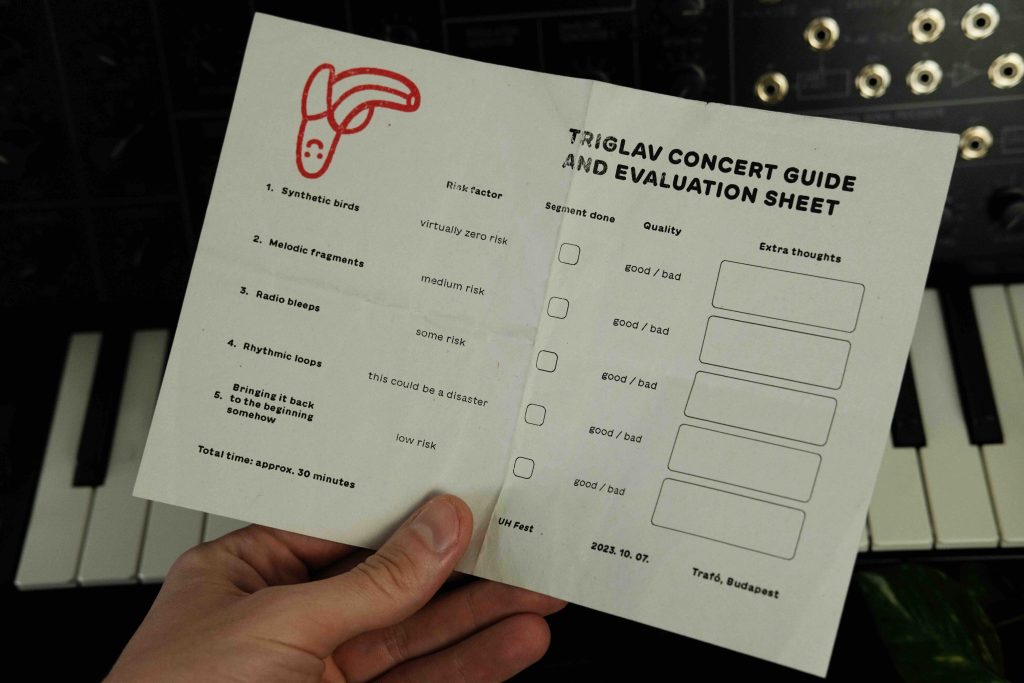
Republished from MMN Mag. Translated by Gabor Nemerov
–
This article is brought to you as part of the EM GUIDE project – an initiative dedicated to empowering independent music magazines and strengthen the underground music scene in Europe. Read more about the project at emgui.de
Funded by the European Union. Views and opinions expressed are however those of the author(s) only and do not necessarily reflect those of the European Union or the European Education and Culture Executive Agency (EACEA). Neither the European Union nor EACEA can be held responsible for them.